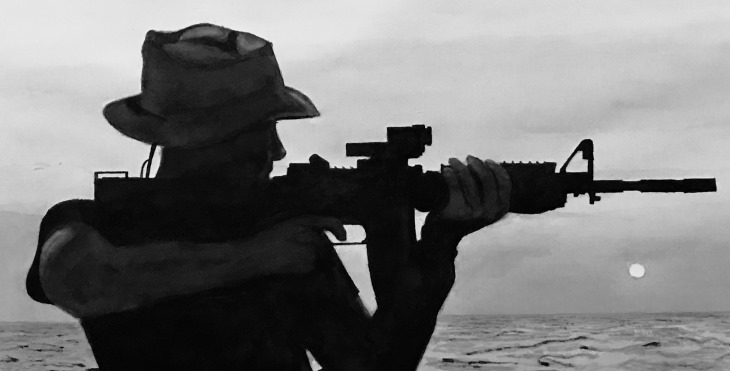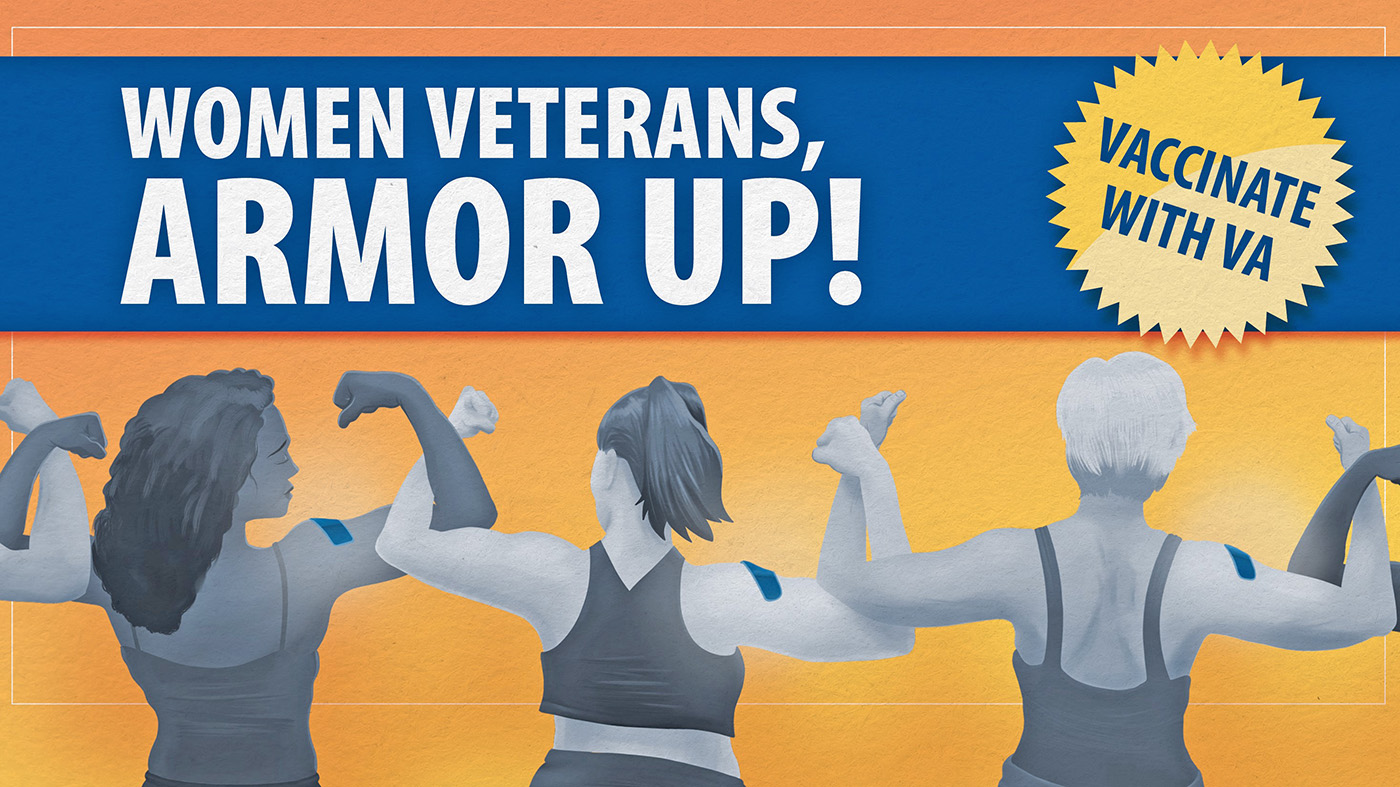On Oct. 21, I participated in the Women In Military Service for America Memorial’s 20th anniversary celebration in Arlington, Virginia. The son of a member of the Greatest Generation, who served in the Navy during WWII, I was also given the distinct privilege and honor of creating the fine art that now hangs in the main gallery of this unique memorial as part of WIMSA’s recognition of contemporary women in the military.
This exhibition of 29 watercolor paintings was created over a period of 30 months. These works are “derivative paintings” because each one includes major elements found in photographs of women (and a young girl) that, with two exceptions, were in the public domain. Every painting – but one – is monochromatic, or done in a single color: Payne’s Gray. Each appears to be black and white, and as such allows one to concentrate on the image in front of them without the unconscious distraction of color to the eye.
When this exhibit was in the early planning stages in 2015 a total of five paintings were envisioned, each representing one of the five branches of the military. At that time, the consensus was that weapons be prominently displayed where possible in these portraits to highlight some of the roles now held by women in the U.S. military.
However, as I began to search the Internet for photographs of women in the military, I discovered women in many different roles across the five service branches. And so I concluded that limiting the exhibit to five “faces” would not adequately represent the image of the contemporary woman in uniform, nor would presenting images of women only carrying or using weapons. So, I unilaterally expanded the number – first, from five to 20, to correlate to WIMSA’s 20th Anniversary and then ultimately to the 29 currently on display, the number of portraits that I was able to complete by the opening date.
Over these past 30 months, I scanned hundreds of photographs of women, and where available read dozens of biographical notes associated with many of these servicewomen. What was I looking for in these photographs? What inspired me to choose one rather than another? I suppose in retrospect it was the image itself combined with other criteria such as rank, branch of service, MOS, ethnicity and, where possible, historical significance. Throughout this process I found myself learning about women I believed came from every walk of life but were, by virtue of their respective photograph, at different stages of their military careers. What I wanted the visitor to this exhibit to see when viewing these paintings was the wide range of emotions that these women felt while in service to their country — to, in a sense, project over a range of work the changing face of courage associated with the several hundreds of thousands of women currently in the military.
As you walk through the Main Gallery, you will see the following:
- The rugged determination in the faces of individual recruits working hard to complete their respective service branch’s basic training program and the stern yet resolute stare of the D. I. who will help to successfully lead and mold young women into strong, resourceful soldiers;
- The joy and satisfaction reflected in the face of the first woman to graduate from the United States Naval Academy;
- The intense concentration on the faces of members of the Army National Guard as they both train stateside or carry their weight, literally, in active war zones;
- The dedication and professionalism ingrained in the faces of Air Force pilots – who now operate frontline fighter aircraft – and of a medic, who accompanies and treats her fellow service members while in flight;
- The caring, compassionate faces of those marines who have provided support and comfort especially to children affected by war or natural disasters;
- The attention to detail and discipline reflected in the face of a Navy technician performing maintenance on a helicopter aboard ship;
- The overwhelming satisfaction of reaching personal and professional milestones mirrored in the faces of African American Air Force and Coast Guard pilots who are trailblazers in their own rights;
- The spirit of teamwork reflected in the face of the Navy “grape” while pulling the fuel line across the carrier deck;
- The trust and love shown in the face of the Air Force K-9 handler for her four-legged partner as they both bond with one another;
- The face of dogged determination and perseverance on the face of one of the first women to graduate Army Ranger School while carrying one of her classmates;
- The profile of quiet contemplation on the face of an Army National Guard Silver Star awardee;
- The innocence and wonderment on the face of a young girl who may one day decide to carry on the legacy of women like those who wear the uniform today; and
- Finally, the faces of courage framed by the smile of a wounded Army veteran and the resolute stare of an Air Force pilot seated in her aircraft who made the ultimate sacrifice in Afghanistan.
The faces of women in the military have undoubtedly changed in the 20 years since this memorial was dedicated in October 1997. In these 29 paintings I have tried, as General Edmunds has noted, “… to capture the essence of the contemporary military woman.” I believe that my reliance on candid images of real women who have served or who are currently serving in the military is in true consonance with the mission of the memorial, and will allow visitors to both recognize and appreciate the ever-increasing contributions of our women veterans and of all those women who are still on active duty or in the reserves.
I am truly thankful to the leadership at WIMSA for giving me the opportunity to be a part of this special 20th anniversary celebration. In accepting their offer to ultimately create this series of watercolor paintings I was able to learn a great deal about our nation’s military and especially of the women who wear the uniform. But most importantly, I was also able to give back something of value to generations of women veterans who sought to protect those who could not protect themselves and to those who currently stand on guard and wear the uniform with pride and distinction.
About the author and artist: Dave Rappaport lives in upstate New York where he often works in charcoal pastel and watercolor to develop monochromatic images that capture the architecture and landscape..
Topics in this story
More Stories
This month’s Center for Women Veterans Book Corner author is Navy Veteran Dr. Jacqueleen Bido, who served as a Information Systems Technician from 1998 to 2006. She wrote “The Person Versus The Process.”
Vaccinations are important for women Veterans’ overall well-being, especially if you’re pregnant or plan to become pregnant.
Women Veterans are 2.5 times more likely to develop Type 2 diabetes than non-Veterans, but prevention is possible.







Great artwork. Thank you for sharing the art along with your story. Too many talented artist out there who are not being productive. By sharing you truly INSPIRE. Keep up the good work. Thanks again.
Beautiful paintings